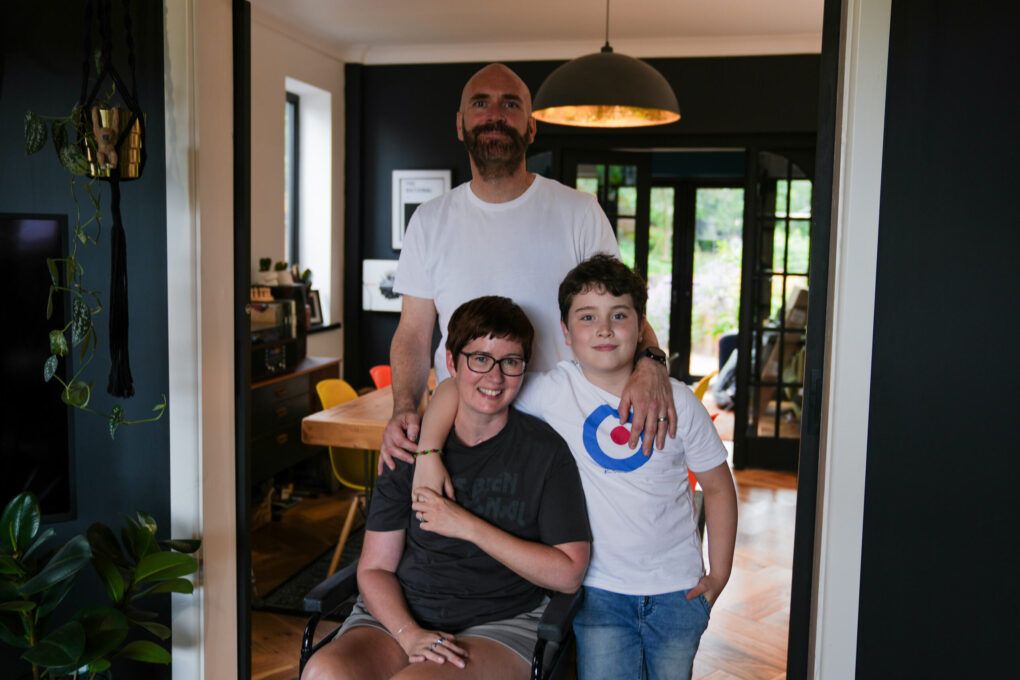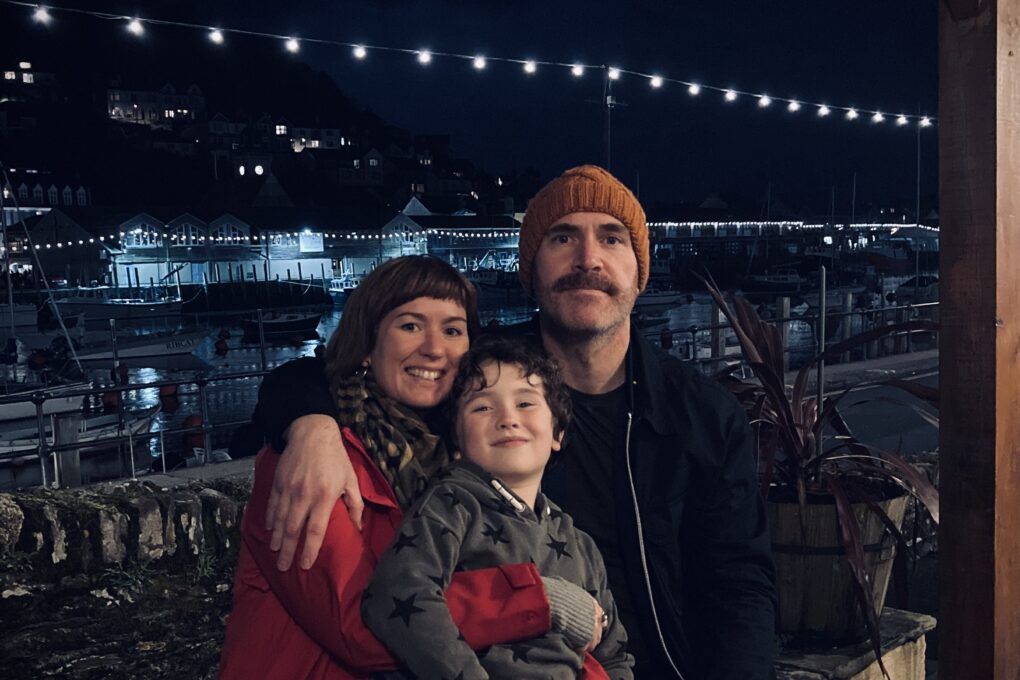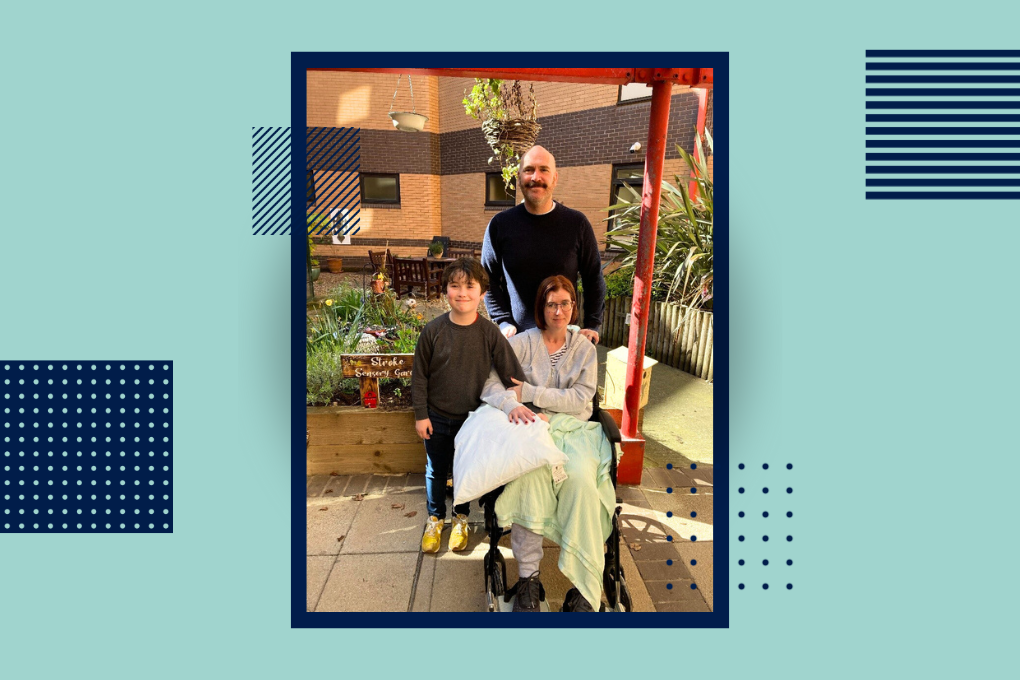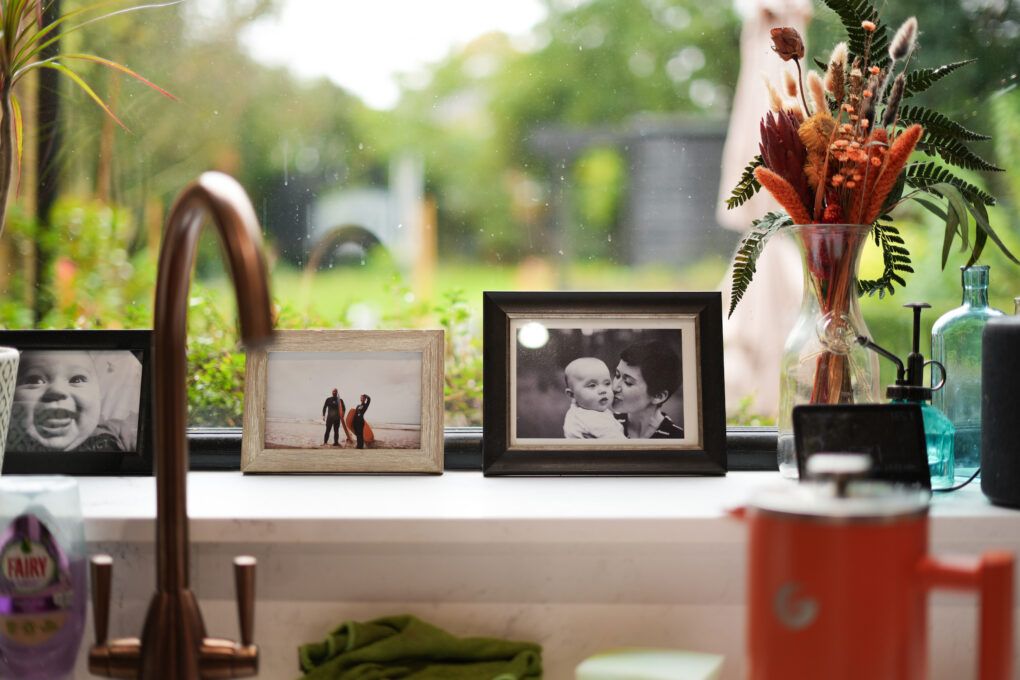‘I had a stroke at 42 – it’s changed family life forever’
Just three years ago, life for the Green family looked very different from how it is today.
Kate was a key member of the community and a keen runner. At weekends she’d go for long walks in the woods with her son, Stanley, and her husband, Adam.
“Me and Mum would play in the garden all the time, she was great on the trampoline, she’d dress up with me too and we did park run every Saturday,” recalls Stanley, aged 9.
But that all changed in December 2021, when Kate, aged 44, had a catastrophic stroke. It was an experience that would change family life forever.
It’s why Adam, 47, signed up at the Our Future Health clinic in Sheffield, wanting to support researchers discover more about stroke and help families like his.

An ordinary school night
It had been a normal day in the Green household. Kate, a public health specialist at Rotherham Council, was working from home – she picked Stanley up from school and took him to his weekly swimming lesson.
But when they got back to the house, things started to go wrong.
“As soon as I stepped through the front door, I just felt this intense pain,” says Kate. “It was like an awful headache right at the back of my head.”
Adam, who works in the civil service, was home. Kate remembers sitting on the bottom of the stairs and saying that she felt vacant.
“It was like I wasn’t really there,” she says today. “I went upstairs to lie down. Within minutes, I couldn’t move my arms or legs, and then I couldn’t speak.”

Touch and go
What happened next is hazy for Kate, but she remembers hearing Adam calling the ambulance and asking her if she could lift her arms or say a rhyme. She couldn’t. “I was just stuck,” she says.
Adam picks up the story: “It took less than 30 minutes from Kate and Stanley getting home to Kate being in hospital on life support.”
In hospital, a CT scan revealed a bleed on Kate’s brain stem (the technical term is acute pontine haemorrhage, or pontine stroke). The chances of surviving this type of stroke are small. Doctors advised Adam to call family members and prepare them to say goodbye to Kate. “I felt numb,” Adam recalls.
But the next morning, the picture changed. Doctors reduced Kate’s sedation, and she coughed because of the ventilation tube in her throat – a sign that she was responding positively.
It was the first, tiny step on the road to Kate’s recovery. To protect her brain from any further swelling, Kate was put in an induced coma for four days. When doctors brought her round, she was paralysed.
In the following days, a speech and language team visited Kate and confirmed that she had full cognitive function. She could communicate by moving her eyes – up for yes, down for no.

The long road ahead
After that, Kate was given a communication chart that allowed her to spell out words by moving her eyes. “It was frustrating and laborious. Sometimes it would go wrong, and I was just screaming the words in my head,” Kate recalls.
In the days and months that followed, Kate continued to make small but vital improvements. She learned to swallow again, speak again, and eventually move again. “First there was a team of six people who had to move me out of the bed, then it was five, then four, and eventually two,” she says.
In March 2022 – four months after her stroke – Kate stood up for the first time. “I burst out crying,” she says.
Life after stroke
Kate left hospital in April 2022 and spent six months in a neurological rehabilitation facility. She returned home in October the same year.
Today, Kate has regained most of her speech, although her voice is different to what it was before the stroke.
Her movement continues to improve, thanks in part to weekly physiotherapy and hydrotherapy sessions. “I can stand up now, but I still struggle to move around the house on my own, so I use a wheelchair or walking frame. I’m trying to get to grips with a walking stick.”
Kate has started back at work, doing two hours twice a week. “Physio keeps me busy but it’s not mentally stimulating. I love my job – it was always a goal for me to get back.”
Inevitably, family life has changed. “Before Kate’s stroke, we worked as a team to run the house,” says Adam. “I worked five days a week, three in the office, and did most of the shopping and cooking. Kate worked four days and sorted the housework, did the school runs and spent a lot of time playing with Stanley.”
Today, Adam works from home and is Kate’s full-time carer, dressing her, cooking for her, and helping her move around the house. He entertains Stanley too.
“Dad’s OK on the trampoline, but not as good as mum was,” jokes Stanley.

Shaping future stroke care
According to statistics from Stroke Association, 100,000 people in the UK suffer stroke each year – that’s one every five minutes. The disease is more likely to occur in those aged over 55, although the average age of stroke victims has fallen in recent years.
Our Future Health hopes to improve the healthcare for stroke, by helping researchers to find new ways to prevent, detect and treat the disease. For example, health researchers will use our information to better identify people who are at high risk of the disease, so that doctors can intervene earlier and stop stroke from happening.
You can read more about how we will help by reading this article on heart disease, which is one of the biggest risk factors for stroke.
Researchers may also make new breakthroughs in areas we do not already know about. Kate’s story provides an example. To this day, she does not know what caused her stroke – she had no family history and no known risk factors. An MRI scan after the event shed no light on what happened.
The Green family are supporting Our Future Health in the hope that it will improve stroke healthcare, so fewer people have to deal with the condition’s life-changing consequences.
For more information on stroke, visit stroke.org.uk. Stroke Association is an affiliate charity of Our Future Health .

Let’s prevent disease together
By volunteering for Our Future Health, you can help health researchers discover new ways to prevent, detect and treat common conditions such as diabetes, cancer, heart disease, stroke and Alzheimer’s.